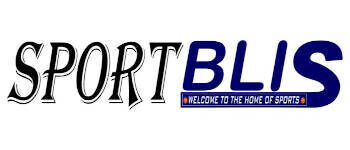Although all golf courses look evergreen and somewhat similar, the grass used on them is of different species. Apparently, the type of Grass Used for a Golf Course usually affects its golfers’ experience. Hence, so much analysis and careful consideration are put in place when choosing the right turf.
It is important to analyze the climatic condition of the golf course before choosing the type of grass to be planted there. Similarly, you have to also consider the growth speed of the golf grass and how much load (people) it can withstand over a specific period of time.
Read on as we enlighten you about the different types of grasses used on golf courses, as well as their pros and cons.
1. Bermuda Grass:
The Bermuda grass is known for its high durability and extreme resistance to harsh weather conditions. It can survive extreme heat, little shade, high humidity, and drought-like conditions.
Bermuda Grass is especially common in Southern USA. It’s commonly used for putting greens because of its fast recovery rate. Sometimes, the Bermuda grass can get graining.
However, you can alter its grainy nature by mowing the grass tightly. Lastly, this golf grass provides a beautifully firm surface, which provides the kind of cushion that most amateurs prefer.

Cons of Bermuda Grass:
The problem with Bermuda grass is that its grain becomes more visible as it grows. When you swing faster, you might not notice the influence of grain on approach shots from the fairway.
However, it cannot be disregarded on or around the greens. Bermuda grass is also reputable for snagging clubs on chip shots into the grain.
2. Bentgrass:
Bentgrass is one of the most popular types of grasses used on a golf course. It is not as dense as the Bermuda grass and is commonly found in coastal regions and under cool summer climatic conditions.
The nature of bentgrass is dependent on seasonal changes. Hence, it comes in diverse varieties. Bentgrass is fine, short, and flat, with closely-mowable blades. Thus it is the perfect match for putting greens and courses. Bentgrass gives the best performance in the evening when it experiences the minimum stress.
Cons of Bentgrass:
Despite being popular for its mat-like appearance, which can be mowed to a lower height to improve the game experience, Bentgrass cannot withstand harsh weather conditions.
Moreso, it requires a lot of water when the weather experiences an increase in temperatures. As a result, the grass on the fairways and greens may become a faint shade of brown, indicating stress due to dehydration. Despite this setback, Bentgrass still gives you one of the best experiences when it is not stressed.
3. Fescue Grass:
Fescue is the grass of links golf, and it frequently grows in the natural, unmowed regions where you would prefer not to hit your golf ball. This type of golf grass is short and usually useful on fairways, greens, and tees.
Interestingly, Fescue grass has a slow growth, which makes it is easier to maintain. This is one of the major reasons course operators adore it. Similarly, the grass requires less water and doesn’t frequently need mowing like many other types of grass.
4. Zoysia Grass:
Zoysia grass is a member of the Poa family characterized by its fine color and deep roots. It is found on municipal courses with varying climates except for cold regions and locations with desert-like weather.
Furthermore, Zoysia is a warm-season grass that requires little water for its maintenance. It also has less grain than Bermuda and is prone to illness. Sadly, the protective coatings it needs can get expensive, making it unsuitable for courses with limited funding.
5. Poa Annua Grass:
Unlike the Zoysia grass, Poa Annua grass has shallow roots. Hence, it is often considered an invasive species. This grass grows quickly, and its seedheads can cause bumpiness on the greens in the late afternoon. Poa annual grass can withstand high traffic levels as well as tolerate moist environments and low light.
6. Rye Grass:

Ryegrass is most of the time preferred on the turf because it is suitable for tee boxes and fairways. The grass is found in cool-summer regions and has a fine texture.
Interestingly, rye grass needs a lot of water. As a result, it occasionally seems to be a bit sticky. Nonetheless, its fine texture makes the field exhibits exquisite striping and aesthetically pleasing mowing patterns.
Related Golf Post:
1. What is a Driving Range in Golf And How Big is it?





